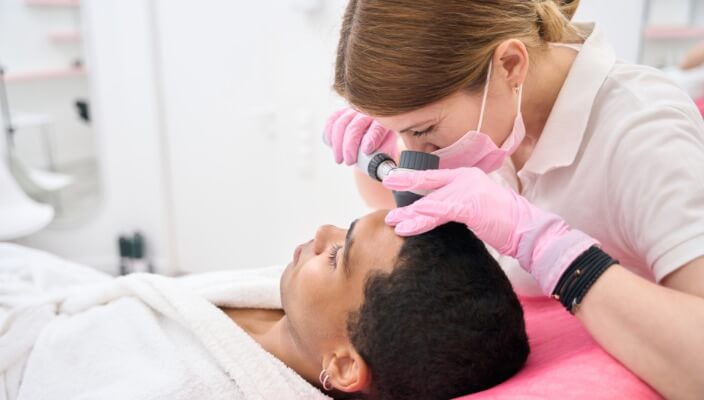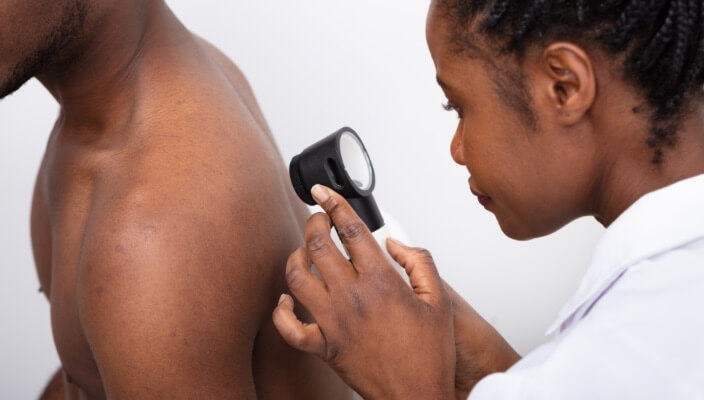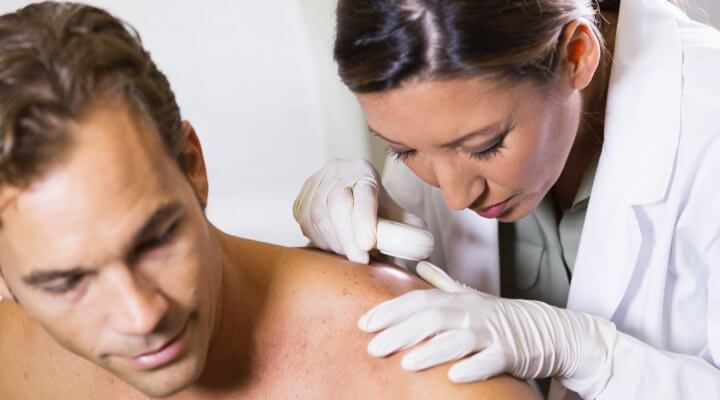Shielding the Skin: A Comprehensive Guide to Skin Cancer Prevention for Men
The Importance of Sun Safety for Men's Skin Health

Skin cancer is deadly for men but doesn’t need to be, as they are more likely than women to develop and die from it. Learn how men can protect their skin and their life. Knowledge is power, so please share this information with the men you care about.
Sun Safety Imbalance: Analyzing the Predominance of Skin Cancer in Men
One in five Americans will develop skin cancer by the age of 70, and a disproportionate number are men. This is especially true with melanoma, the deadliest form of skin cancer.
- One in 28 white men will develop melanoma.
- Males 49 and under have a higher probability of developing melanoma than any other cancer except colon and rectum cancers.
- From ages 15 to 39, men are 55 percent more likely to die of melanoma than women. From age 50, significantly more men develop melanoma than women.
- Men account for more than half of new cases of invasive melanoma and almost twice as many deaths.
Exploring Factors Contributing to Higher Skin Cancer Mortality in Men
- Cumulative unprotected exposure to the sun from outdoor work and activities
- Less likely to wear sunscreen, practice safe sun habits, check for skin changes, or visit the dermatologist
- Disregard of skin changes, which can be deadly, causing a delayed diagnosis
- Mistakenly believing that a tan is healthy and protects against sunburn or that skin can’t burn on cloudy days
- Inability to see skin changes in areas where male skin cancers often occur, including the back, scalp and ears
Men can easily reduce skin cancer risks
Skin cancer is EASILY preventable and is 99% curable if caught early. Men, you can dramatically reduce skin cancer risk by wearing sunscreen, practicing safe sun habits year-round, performing monthly skin self-exams, and seeing a dermatologist for an annual skin exam. The first step is learning about skin cancer and the dangers of the sun:
- Anyone, regardless of age, gender, ethnicity and skin type, can get skin cancer.
- Skin cancer is caused from cumulative exposure to harmful ultraviolet light from the sun. Skin damage accumulates over the years from outdoor activities (yard care, dog walking, commuting to work, golfing, etc.).
- Skin cancer can occur on skin that gets very little sun (e.g., between the toes).
- A tan is a sign of skin damage and does NOT protect you against sunburn or skin cancer. Skin darkens as it defends itself from harmful UV radiation.
- Sunburn can occur on unprotected skin in as little as 11 minutes. A blistering sunburn in your 20s more than doubles your risk of developing melanoma later in life.
- Cancer-causing UV rays penetrate clouds and glass and reflect off snow, water, sand and cement.
Sun protection is critical
Daily sunscreen use reduces melanoma risk by 50%. Apply a broad-spectrum, water-resistant SPF 30 or higher sunscreen on exposed skin, including your ears, fifteen minutes before going outdoors. Reapply sunscreen every two hours and after swimming or sweating. Adults need approximately one ounce (a shot glass) for adequate coverage. Wear sunscreen even on cloudy days or if you’re in the shade. Shop.PinnacleSkin.com offers clear, non-greasy formulas.
Sunscreen does not block all UV rays, so cover up with protective clothing, if possible, especially if you work outdoors. Wear a lightweight long-sleeved shirt, pants, wide-brimmed hat and wraparound UVA/UVB sunglasses. Ultraviolet protection factor (UPF) clothing provides additional protection.
Stay in the shade as much as possible, especially when the sun’s rays are strongest (between 10 am and 2 pm). If your shadow is shorter than you, it’s time to get out of the sun. Use caution near water, snow and sand, as they reflect the sun and may increase your chance of sunburn. It is important to practice safe sun habits year-round.
Skin self-exams save lives
Monthly skin self-exams help men notice changes in their skin and find skin cancer early when it is treatable. Check your skin for anything new, changing or unusual. Examine blemishes and moles for the skin cancer ABCDEs:
- Asymmetry: one side appears different than the other
- Border: irregular, scalloped or poorly defined border
- Color: multicolored, with uneven shades of tan, brown, black, white, red or blue
- Diameter: larger than 6 mm (the size of a pencil eraser)
- Elevation and Evolving: raised or changes in size, shape or color
It helps to ask a loved one to check hard-to-see areas where melanoma is likely to occur, such as on the back, ears and scalp. Involving your partner can make self-exams fun and even something to look forward to. Read our blog for easy instructions on how to do a quick self-exam.
If you have a spot or mole that is new or different from others or changes, itches or bleeds, see a dermatologist as soon as possible to get it checked. Do NOT ignore any skin changes or areas that aren’t healing. We would rather reassure you that you’re fine than discover a melanoma too late.
Get screened for skin cancer annually
In addition to self-exams, see a Pinnacle Dermatology provider for a yearly Total Body Skin Exam. Screenings help us find early signs of skin cancer when it is highly treatable. During this potentially life-saving exam, we check your skin from head to toe and note issues that require monitoring or closer examination. Sometimes skin cancers resemble seemingly normal skin or benign conditions like warts, scars or pimples, so having an expert look for subtle signs brings peace of mind. Schedule your annual exam today.
Source for statistics: The Skin Cancer Foundation
Featured Products for Sun Protectants
Check your local office for current stock!
Check your local office for current stock!
Featured Blogs

- Skin Cancer
- Skin Exams
- Sun Safety
When it comes to skin cancer detection, the saying "better safe than sorry" couldn't be more appropriate.
Read More
- Skin Cancer
- Skin Exams
Uncover crucial facts about skin cancer prevention, dispel myths, and stress the significance of sun protection and regular skin checks, all underlined by compelling statistics.
Read More
- Skin Cancer
- Skin Exams
Total Body Skin Exams (TBSEs) are crucial for healthy skin. Learn more about the importance of TBSEs and skin cancer detection.
Read More


